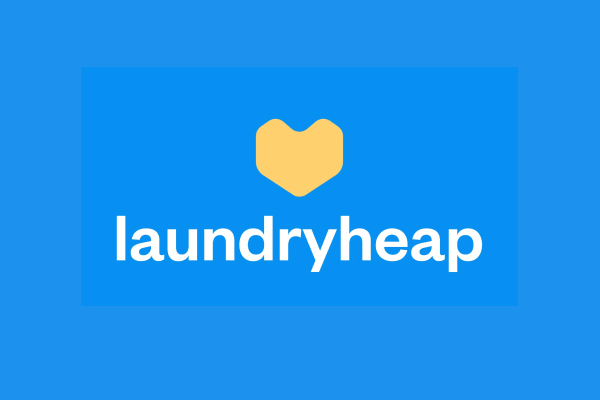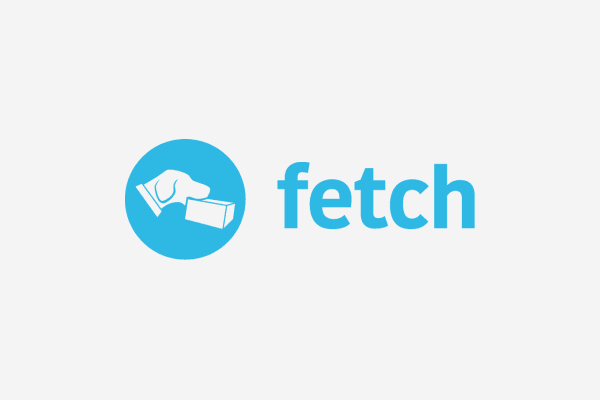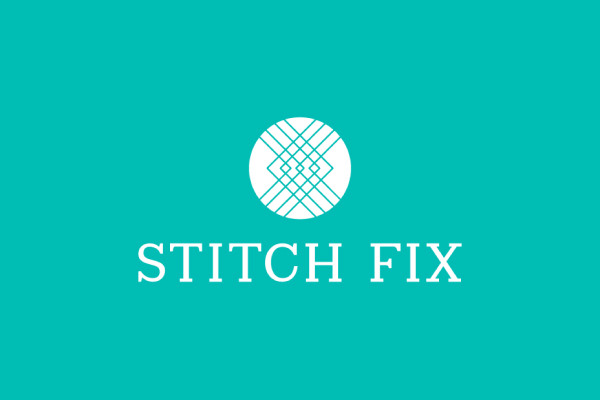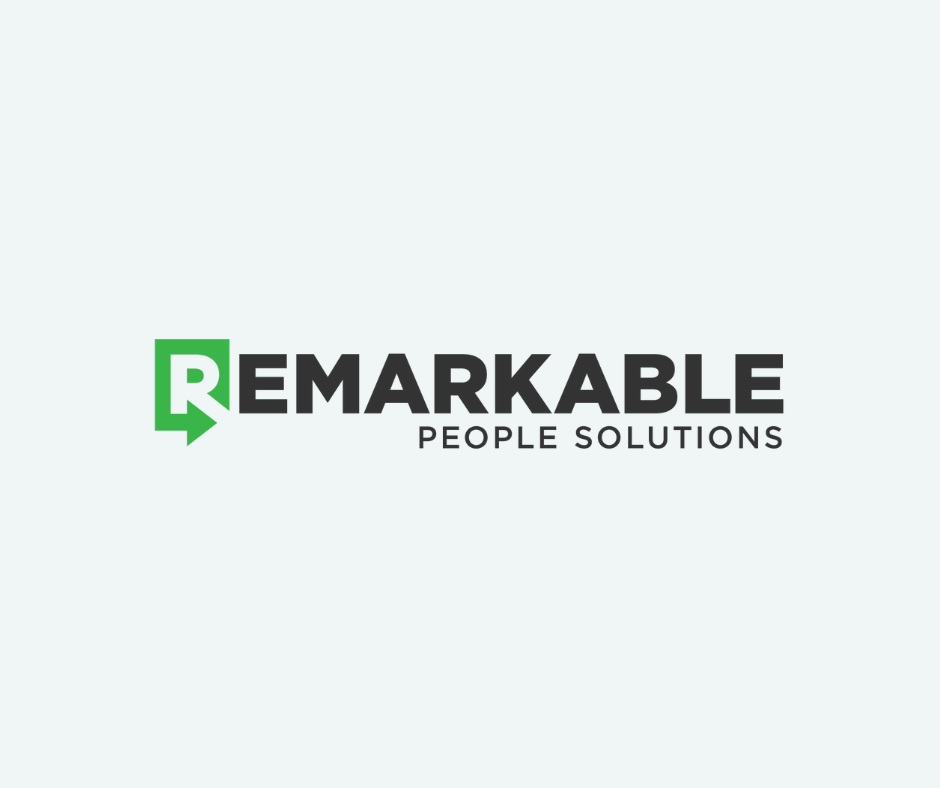Frontline Hiring: The Ultimate Guide
Frontline hiring: The basics
Frontline workers are indispensable to the global economy, with 76.1 million hourly workers in the U.S. alone in industries like logistics, healthcare, retail, manufacturing, hospitality, and food and beverage.
This subset of workers has vastly different expectations and preferences when it comes to their jobs, compared to corporate or salaried workers. In the face of a fickle economy, fluctuating seasonal demand, and high turnover rates, companies have to hire and train new workers almost constantly to keep their businesses afloat.
What is frontline hiring?
Frontline hiring is the act of sourcing, screening, and hiring workers for hourly employment. Because these workers may not have the same skills and work experience as corporate employees, hiring them requires a completely different process and system.
However, 71% of HR professionals use the same system to hire both frontline workers and salaried workers. Using one process to manage two groups of applicants with different goals, hiring timelines, and job preferences can impede recruiters’ ability to staff the right people in the right positions.
Corporate hiring vs. frontline hiring
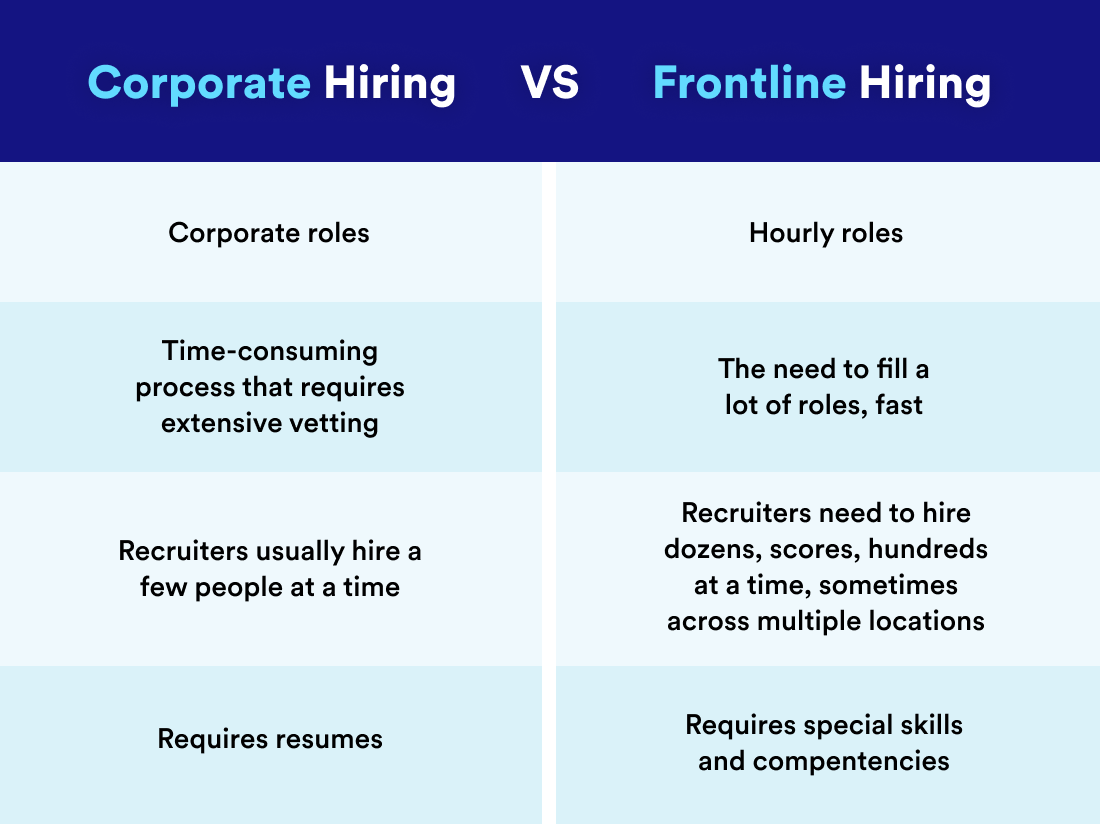
These variables require recruiters to rethink the way they hire frontline workers because the status quo just won’t cut it.
To capture the attention and interest of frontline workers, your recruiting process needs to be faster, smoother, and more engaging than a typical corporate hiring workflow. So how can you get there? Let us be your guide.
Who are frontline workers?
Frontline workers are the backbone of the global economy. From mom-and-pop shops to major warehouses, hourly workers keep engines moving so you can make it through your day with ease.
Frontline jobs span industries like logistics and manufacturing, transportation, grocery, retail, delivery, professional services and even healthcare. Job titles might include cashiers, home health aides, warehouse associates, and long-haul truck drivers.
These workers affect how the general public eats, shops, travels, and is taken care of when sick. Without them, our daily lives would stop, which makes them not only essential but also critical to a functioning society.
The resume is an outdated tradition
It’s a tale as old as (modern-day) time—if you want a job, you need to submit a resume, a document that has long been required to apply for corporate roles. These docs reveal a candidate’s experience and accomplishments but they don’t always convey someone’s actual ability to perform a job.
To break the “paper ceiling,” companies that hire frontline workers would benefit from removing the resume requirement altogether and focusing instead on an applicant’s soft skills, like organization, cooperation, and time management.
How to define job requirements for frontline hiring
The first step to crafting your frontline hiring strategy is to define job requirements and create compelling job descriptions.
Identify necessary skills and competencies
Frontline workers may not have resumes packed with experience or multiple advanced degrees, but they do have transferable skills. Such skills—like critical thinking, adaptability, and communication—are acquired through learned experience and can apply to a wide variety of jobs.
By relaxing requirements based on experience or education and, instead, focusing on skills, you can expand your pool of potential applicants.
Consider the role of job descriptions in attracting suitable candidates
Writing a frontline job description requires the human touch to strike the right chord with its intended audience. Because frontline workers typically apply to multiple jobs at the same time, job descriptions need to be brief but also contain all the info prospects need to make their decision about whether to apply. Click here for a few tips on writing effective job descriptions.
Additional resources
The needs and expectations of frontline workers
In order to attract, hire, and retain frontline workers, hiring teams need to have systems in place that cater to the lifestyles and preferences of this subset of the population. These workers are often on the go, use their mobile devices for everything, and typically apply for multiple jobs at the same time. With this in mind, recruitment needs to be structured to keep them engaged and moving swiftly through the process.
Adapt your hiring process for the frontline worker
As mentioned above, frontline workers have unique needs and expectations when it comes to applying for jobs. Therefore, the frontline hiring funnel needs to match these needs with different recruitment approaches than those employed by corporate HR departments.
Did you know?
Most recruiters use the same ATS to hire all workers, regardless of the type of job. But not all hiring platforms are designed to cater to the frontline workforce.
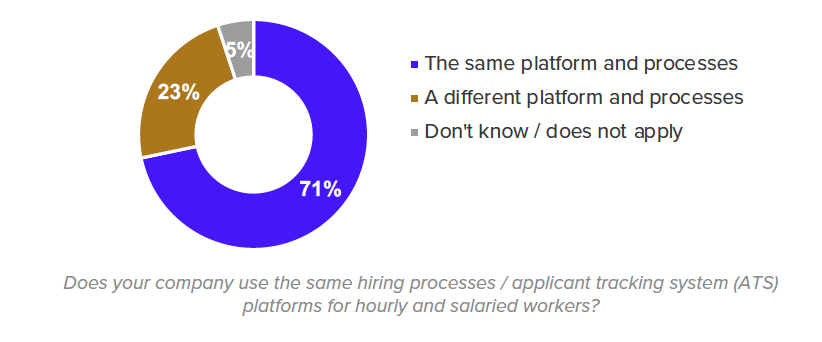
You wouldn’t use a toothbrush to mop your floor, so why use a corporate ATS to hire hourly workers? Let’s explore the benefits of a frontline-specific ATS.
Modern recruitment strategies for frontline hiring
Hiring high volumes of workers at once can be daunting, but a frontline-specific ATS can help you turn applicants into new hires in a matter of minutes. How? See below.

The working world is in the midst of a digital transformation, and everything from your sourcing methods to your hiring process can’t escape this technological takeover. A frontline ATS has you covered with automatic job postings to multiple job sites, engaging conversations through the power of artificial intelligence, and easy-apply capabilities from applicants’ mobile phones.
If your ideal frontline job candidates have a mobile phone (which nearly all of them do), you can put your job opening right into the palm of their hand with a mobile-enabled application. With a few swipes and clicks, applicants can submit their information, credentials, and schedule availability to get hired in minutes.
Did you know you have a recruiting solution already at your fingertips? Your existing employees! Offer referral bonuses to incentivize them to refer their friends, former coworkers, or family members to apply for your frontline openings.
Hiring and onboarding frontline workers with ease
Now that you’ve got your applicants’ attention, it’s time to woo them with a smooth and friction-free hiring process.

Frontline workers typically undergo background checks before they’re offered a position, but not all background checks are created equal.
Whether your frontline jobs require in-person interviews, one-to-one video interviews, or one-way video interviews, a frontline ATS can help you schedule and conduct these conversations automatically.
Whether your frontline jobs require in-person interviews, one-to-one video interviews, or one-way video interviews, a frontline ATS can help you schedule and conduct these conversations automatically.
The frontline hiring experience doesn’t have to (and shouldn’t) stop once the offer has been accepted. Guide your new hires through an educational onboarding process so they know exactly what to expect on day one.
Legal considerations for frontline hiring
Hiring frontline workers comes with a slew of legal considerations hiring teams need to keep in mind, especially with the advent of artificial intelligence, which is already seeing widespread use for high volume hiring. Before launching your frontline hiring plan of action, brush up on the latest AI laws, frontline worker regulations, and best practices to use available technology most effectively.
Additional resources
Frontline hiring strategies in action
What does frontline hiring look like in the real world? See how some of our customers have adapted their hiring processes to cater to frontline workers.
Frontline hiring with Fountain
How did our customers achieve these results? With Fountain.
Fountain is the only platform built for recruiting, hiring, and retaining frontline workers at scale. With AI-powered outreach and automation, highly configurable workflows, and integrations with existing systems, Fountain unites qualified frontline workers with the organizations that need them.
With Fountain, organizations can build a pool of qualified talent, improve the application process, reduce administrative burden, and realize ROI faster.
Ready, aim, hire!
Armed with the above information, you’re ready to build a frontline hiring process that improves hiring for both recruiters and candidates. Happy hiring!

